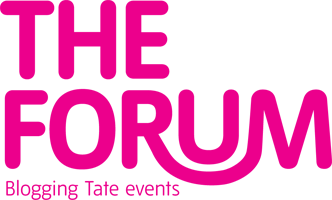 Cy Twombly Wilder Shores of Love (Bassano in Teverina), 1985. Cy Twombly Collection © Cy Twombly.
Cy Twombly Wilder Shores of Love (Bassano in Teverina), 1985. Cy Twombly Collection © Cy Twombly.
As I recently wandered around the Cy Twombly retrospective, my eye was caught by a series of 24 drawings called Poems to the Sea. Executed on small squares of white paper whilst Twombly was staying in Sperlonga, a tiny fishing village perched on the coast between Rome and Naples, these works are at once drawings, poems, and, it seemed to me, musical scores. Numbers march at intervals across the surface of the drawings – you can almost imagine the artist beating in time as he put them down – ‘one, two, three, four – five.’ Horizon lines merge into stave lines. Splodges of plaster and accented pencil marks – whilst conjuring up waves and spray – become a score for their own performance.
The Theatre Of Possibilities, a concert held last week by the Almeida Ensemble directed by Richard Bernas, brilliantly complemented the drama and musicality of Twombly’s works. As Tom Service observed on the Guardian blog, this was no mere shoe-in to coincide with the exhibition. Instead, it opened up an illuminating perspective on Twombly’s performative mode of working, aptly summarised in Bernas’ programme notes by a quote from the New York critic Harold Rosenberg, made in 1952: “at a certain moment the canvas began to appear to one American painter after another as an arena in which to act… what does on to the canvas was not a picture but an event.”
The importance of music for Twombly, and the extent to which it has influenced his painterly vocabulary, was clearly evidenced by the evening’s programme. It opened with a recording of Voile d’Orphee by Pierre Henry, a pioneer of electronic composition, which, with its complex textures and classical allusions, forms a musical correlative of Twombly’s painterly technique. Two songs by John Cage, who was with Twombly at Black Mountain College between 1951-52, followed; Experiences 2 and The Wonderful Widow of 18 Springs, which both transpose modernist texts (by e.e.cummings and James Joyce respectively) into unaccompanied folksong arrangements for the voice, whilst the evening ended with Monteverdi’s Combattimento, performed with relish and gusto by the Mezzo-Soprano Sally Burgess.
A particular highlight was John Cage’s Fourteen, an orchestral late work imaginatively staged at the Almeida (for what was, incidentally, its European premier) by Ellie Rees, with the musicians positioned between a fretwork of cables. As part of the piece, Bernas delicately threaded fishing wire into the bowels of a grand piano and slowly scraped it across the steel strings, to emit an almost continuous frail keening sound. The noise, according to him, is akin to ‘strangling a hamster’ – but at least you know the hamster dying a ‘slow but interesting death.’
The timings and tensions of Fourteen make for a listening experience during which you become intensely attuned to the moment of enactment. Twombly has said of his technique “each line is now the actual experience with its own history. It does not illustrate – it is the sensation of its own realisation.” This sensation of realisation is apparent in Fourteen as it is in Poems to the Sea.
Sunday, July 27, 2008
Performance Art
Labels:
Cy Twombly,
John Cage,
Modernism,
Music
Subscribe to:
Post Comments (Atom)




No comments:
Post a Comment